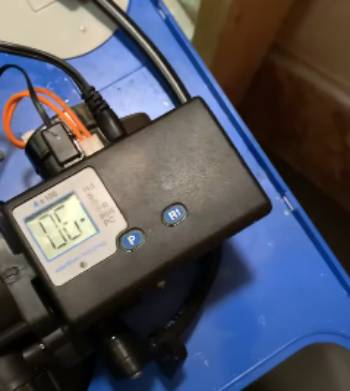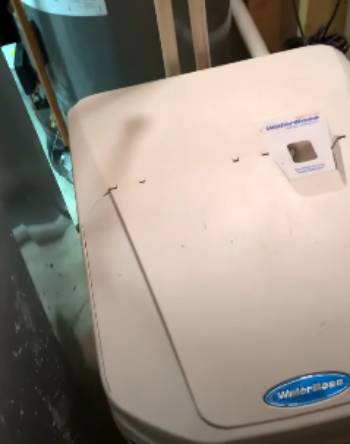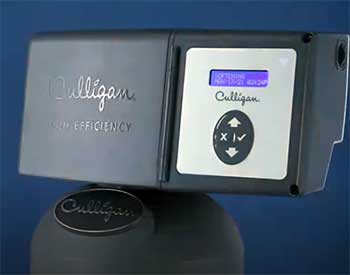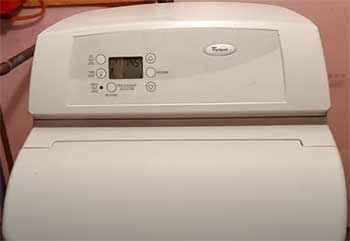If you’re shopping for a water softener and thinking about the WaterBoss ProPlus 380, I want to help you make a well-informed decision based on real user experience.
While this unit looks good on paper, the reality doesn’t quite live up to expectations.
You might be better off considering other brands that offer more reliability and durability.
In this article, I’ll share my full experience with the WaterBoss ProPlus 380, cover the pros and cons, maintenance issues, and how it stacks up against other popular models.
My Experience with the WaterBoss ProPlus 380

When I first brought the WaterBoss ProPlus 380 home, I had high hopes.
It promised compact size, high efficiency, and minimal salt use.
As someone who’s handled water softeners before, I expected a straightforward setup, and initially, it seemed like things were on track.
The unit fit neatly in my utility space and installation was manageable with basic plumbing knowledge.
However, that optimism didn’t last long.
Just days after the setup, the system began making irregular noises during regeneration.
I thought it might be air in the lines, but the sounds persisted.
Not long after, I noticed the water pressure dropping throughout the house.
The softened water didn’t feel as effective either – dishes had spots again, and my skin felt dry.
I reached out to support and, to their credit, they were responsive at first.
But even after a part replacement, the issues never completely disappeared.
Regeneration cycles became inconsistent and, at times, water would bypass the system entirely.
The breaking point for me was the maintenance hassle.
The brine tank required frequent checks, and salt bridges kept forming, which meant I had to manually break them up regularly.
Eventually, I stopped relying on it and started looking for a replacement.
The Noise Factor You Can’t Ignore
One of the most frustrating things I had to deal with using the WaterBoss ProPlus 380 was the noise level during regeneration.
Now, I’m not talking about a subtle hum. I mean a clunky, grinding sound that echoed through my utility room and even into nearby living spaces.
At first, I thought it might just be a faulty unit or maybe something loose during installation. But after scanning through user reviews, I realized I wasn’t alone.
The noise is a recurring issue that many others have reported.
During late-night cycles, this was especially bothersome.
I’d be winding down for bed only to hear the unit kick in, interrupting the quiet with mechanical clatter that made it hard to relax.
I tried padding the area around the unit and even rechecking the installation to see if vibration was the cause.
But none of it helped.
And to be honest, a product at this price point should be engineered to run more quietly.
Other brands like Rheem or Culligan have noise-dampening features that make them virtually silent.
That’s not the case here.
So, if you’re someone who values peace and quiet in your home, this is something to take seriously.
A water softener should operate in the background—not dominate the soundscape of your evenings.
For me, it was another reason this unit didn’t make the cut.
Regeneration Timing: Unpredictable and Annoying

Regeneration timing on the WaterBoss ProPlus 380 turned into an unexpected daily hassle.
When I first set it up, I followed the manual and programmed it for night cycles, which should’ve meant soft water by morning.
But after a few days, I noticed that regeneration wasn’t always happening on schedule.
Some mornings the water still felt hard, and I’d see scale forming around my faucets and glassware.
Other times, it regenerated during the day—right when I needed water the most.
It felt like the system had a mind of its own.
Even after trying to reset the timer, the inconsistencies didn’t go away.
And when I reached out to support, the advice I got didn’t solve the issue.
They suggested a manual reset or even replacing the control board, which seemed like overkill for a unit less than a month old.
This unpredictability threw off my entire water schedule.
Whether it was doing laundry, taking a shower, or running the dishwasher, I never knew if I’d have soft water or not.
A good water softener should offer “set it and forget it” functionality.
Instead, this one felt like another thing I had to babysit.
If you lead a busy lifestyle and don’t want to keep micromanaging your home systems, this will get old fast.
It did for me, and it was one of the tipping points in my decision to switch to a different brand altogether.
Design and Build: Style Over Substance?
At first glance, the WaterBoss ProPlus 380 actually looks quite sleek.
Its compact build and modern casing seem like a win, especially for homes that don’t have a lot of space.
And I’ll admit—I was initially impressed by how easily it fit into my laundry area.
But once I started using it, I realized that the build quality didn’t match the design.
The plastic felt cheap and flimsy, especially the top lid which felt like it could crack with even light pressure.
In fact, mine arrived slightly dented despite being factory sealed.
Even worse, internal components didn’t feel secure.
One of the valve connectors inside had already loosened during shipping.
I ended up having to tighten it before I could even begin the setup.
And over the following weeks, I noticed small leaks forming around the inlet.
I later found out from a plumber that some of the internal fittings are known to wear down prematurely.
The buttons on the control panel were another letdown.
They required multiple presses to respond, and there was no tactile feedback to confirm settings were saved.
This all adds up to a product that prioritizes appearance over actual long-term usability.
In my case, the aesthetic appeal didn’t justify the ongoing frustrations.
When you’re spending this kind of money, you expect something durable—not just something that looks good on a shelf.
Maintenance Tips and Realities
Maintaining the WaterBoss ProPlus 380 was not as easy as advertised.
To start, the brine tank had to be monitored closely.
Salt bridging was a recurring issue that forced me to break apart hard salt crusts every few weeks.
Skipping this step would lead to ineffective softening or stalled regeneration cycles.
Then there was the resin bed.
Though it was supposed to be self-cleaning during regeneration, I had to manually flush it every few months to keep things working somewhat smoothly.
Another thing that bugged me was the control panel.
The buttons felt outdated and weren’t very responsive.
Once, the panel froze entirely during a storm-related power outage, and it didn’t reboot properly until I unplugged and restarted it manually.
Not ideal.
Cleaning the unit was also tricky.
There are small areas that trap grime and mineral buildup over time.
I had to dismantle parts of the system more often than I liked just to give it a proper clean.
In my opinion, a water softener should require light, routine upkeep – not constant babysitting.
The WaterBoss 380 didn’t meet that standard for me.
Pros and Cons of WaterBoss ProPlus 380

Pros:
- Compact Design: Fits easily into small utility areas without sacrificing too much space.
- Low Salt Usage: Uses minimal salt per regeneration cycle when functioning correctly.
- Quick Regeneration Time: Claims a faster regeneration cycle compared to many competitors.
- Built-in Sediment Filter: Offers basic filtration alongside softening.
- Appealing Price Point: Costs less than many premium models, making it attractive to budget-conscious buyers.
Cons:
- Reliability Issues: Inconsistent regeneration cycles and fluctuating water pressure have been common complaints.
- Durability Concerns: Multiple users (myself included) have reported issues within the first year of use.
- Noise During Operation: The system can be loud during regeneration, enough to disturb nearby rooms.
- Poor Build Quality: Several units arrive damaged due to weak packaging and fragile internal parts.
- Limited Customer Support: While initially helpful, their follow-up on ongoing problems tends to fall short.
WaterBoss ProPlus 380 Vs. Other Brands
- WaterBoss ProPlus 380 Vs. Culligan Aquasential

The Culligan Aquasential is designed with durability and convenience in mind.
Where the WaterBoss ProPlus 380 struggles with long-term reliability, Culligan units hold up well year after year.
Their models feature smart sensors and robust regeneration controls, making them a better option for households that don’t want to tinker with settings frequently.
Water quality from Culligan also feels noticeably better.
I noticed softer skin and less scale buildup almost immediately when switching.
If you value consistency and less hands-on maintenance, Culligan wins by a long shot.
- WaterBoss ProPlus 380 Vs. Whirlpool WHES40E

Whirlpool WHES40E comes with superior customer support and a more intuitive user interface.
The digital display is clear and easy to program, unlike the dated panel on the WaterBoss.
Plus, Whirlpool offers stronger warranties and more responsive service centers.
The WHES40E also regenerates based on demand, which makes it more efficient in households with fluctuating water usage.
The WaterBoss may be cheaper upfront, but Whirlpool’s reliability saves money and stress over time.
- WaterBoss ProPlus 380 Vs. GE GXSH40V
GE’s GXSH40V offers a more modern experience overall.
The tank capacity is greater, making it a better choice for larger homes.
In terms of softening power, GE’s results were more consistent, especially after months of use.
I didn’t experience any water pressure drops with the GE unit either.
While the WaterBoss faltered under peak demand, the GE performed smoothly.
It’s a better investment if you have more than three people in your household.
- WaterBoss ProPlus 380 Vs. AO Smith AO-WH-SOFT-400T
AO Smith’s model features better water-saving features and a stronger overall build.
The AO-WH-SOFT-400T has a corrosion-resistant resin tank and runs quieter during regeneration.
Where WaterBoss often has packaging or structural issues out of the box, AO Smith delivers a unit that feels solid and dependable.
The regeneration process is cleaner and quicker too, with fewer clogs or missteps.
- WaterBoss ProPlus 380 Vs. Rheem RHS32
Rheem’s RHS32 is more user-friendly and provides better tech integration.
With clear LED indicators and an easy maintenance reminder system, it takes the guesswork out of upkeep.
WaterBoss lacks these smart features and feels outdated in comparison.
Rheem also maintains steady performance even with hard municipal water, which is something WaterBoss struggled to handle in my case.
If you’re looking for simplicity and efficiency, Rheem is the better pick.
Frequently Asked Questions (FAQs)
It depends on what you’re looking for. While it’s budget-friendly and compact, many users report durability and performance issues.
On average, the regeneration process takes about 20 to 30 minutes when functioning properly.
Many users see breakdowns or performance issues within 1 to 3 years, although some units last longer with meticulous maintenance.
WaterBoss is manufactured by EcoWater Systems, a division of The Marmon Group, part of Berkshire Hathaway.
Final Thoughts
After everything I’ve been through with the WaterBoss ProPlus 380, I honestly can’t recommend it.
Sure, it has a few appealing features on the surface—compact size, low salt use, and a fair price.
But those benefits are quickly overshadowed by real-world issues like loud operation, poor reliability, inconsistent regeneration, and fragile construction.
This unit required way more attention than it should’ve.
I found myself constantly monitoring it, troubleshooting problems, and dealing with performance issues that just didn’t belong in a system that’s supposed to make life easier.
If you’re serious about getting a water softener that works reliably and doesn’t become another chore, you have better options.
